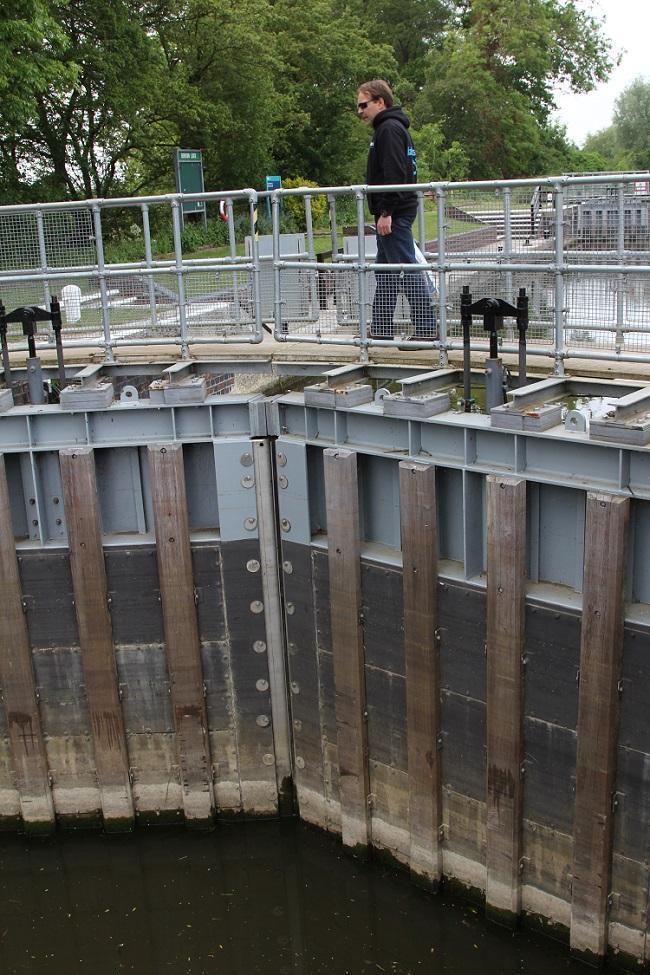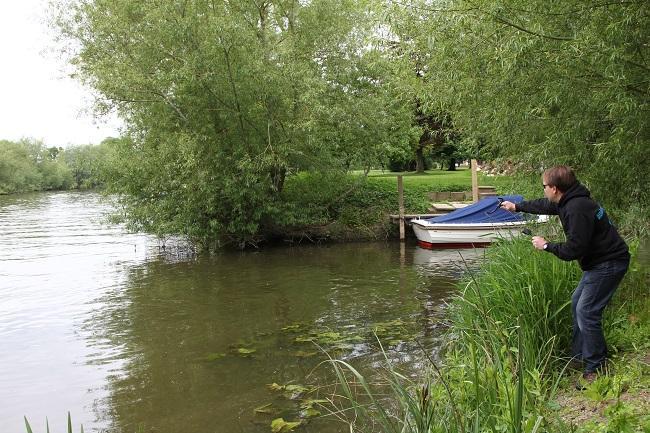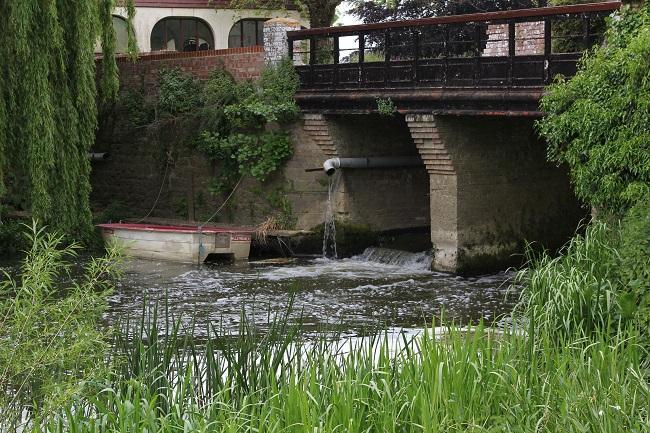We live in a country where the inhabitants of just about every stillwater are known and charted, so river carp fishing represents the last frontier of the unknown. They present many challenges to carp anglers, but the rewards include catching fish that may very well have never seen a hook before.
In recent years river fishing for carp has gained more popularity, partly due to well known carp anglers such as Terry Hearn and Nick Helleur documenting there fishing sessions on the river Thames, with Nick catching the first ever 50lb carp known to be caught from the Thames in 2018. This is a record which still exists today.
Whilst the popularity may have increased, the sight of a carp angler on bank of the Thames or other rivers is still relatively rare. This is partly due to river carp fishing being a finely honed skill where unlike well stocked carp lakes, a chuck it and chance it approach is unlikely to work.
However, with the right preparation and knowing areas that carp tend to favour, catching carp form the river is very achievable.

Target rivers close to carp lakes that have previously flooded
If you want to get in on some river action then the first consideration is location. On a national scale, the larger rivers like the Trent and Thames are obviously great starting points, but don’t neglect smaller waterways. For example, Yorkshire’s River Aire has produced a 50-pounder – a fish washed into the river at a much smaller weight many years ago after flooding at Eric’s Willows Lake. In fact, targeting rivers close to established carp lakes that have flooded is also a good starting point. There are many former still water inhabitants swimming in the Thames, for instance.
Ask local tackle shops and match anglers for advice
If you’ve got your eye on a certain stretch of river, be aware that local carpers are unlikely to share all their information with you, but it is well worth tapping up local match anglers and tackle-shop owners to see where pleasure fishermen have accidentally caught or hooked carp.

Areas close to houseboats are a good starting point
Once you’ve done your research and are in a position to get out and roam the banks, a great time to do so is during the close season or around spawning time. You might not be able to fish, but the carp will be at their most visible. Areas containing houseboats and constant human activity can actually be very good starting points – the extra warmth from the boats and the promise of discarded food can keep the carp in these areas.
Bait clear areas and marginal features
Your other option is to bait and wait. Start by finding a likely looking area. Similar spots to the ones you find in lakes, like clear areas and margin features, are ideal, but you will also want to find areas of slack water away from the main flow where carp can conserve energy, particularly in the colder months.

Start your baiting campaign with bulk particle and pellets
Next, give it some bait. It needn’t be expensive boilies, though you may want to introduce some more nutritional food items at some points. Bulk particles and pellets will help draw in all sorts of species, but if you regularly apply bait over a period of a few weeks you’re likely to find out if there are carp in the area. They may not appear instantly, or at all, but this tactic can create a spot that you can keep to yourself.
Strong snag leaders and 20lb-plus mainlines are advisable
Assuming you’ve found carp and are happy with an area, then it’s time to tackle up and get going. River carp live in a far harsher environment than their stillwater cousins, so don’t expect them to behave in a similar way. These fish are generally stronger and fitter to deal with the ebb and flow of moving water, so when you hook one prepare to hold on tight. To that end, you’ll need tackle that’s not only up to the job of taming the carp, but also taming the surroundings. Rivers are, sadly, home to plenty of manmade underwater obstacles like bikes and shopping trolleys, so strong snag leaders and 20lb-plus mainlines are advisable. Tough hooklinks and strong hooks go hand in hand with this, so don’t afraid to err on the side of strength over subtlety. Remember, these fish aren’t pressured like day-ticket carp, so your rigs don’t need to be complex or fancy.
5oz leads and above are required to hold bottom
For river carp fishing uou will need enough weight to hold bottom in the flow, so look to stock up on leads of 5oz and above. The gripper-style varieties will also help keep your presentation in place. Rigs should be constructed with this flow in mind. Supple braid is likely to tie itself in knots, or get mangled by crayfish, so stick to stiffer coated braids, monos or fluorocarbons
.
Use large hook baits to keep nuisance fish at bay
Our rivers are full of other species like bream and chub, so very large hookbaits can help keep these at bay. Snowman presentations are particularly popular with river carpers. Big baits need bigger hooks, so don’t be afraid to look at size 2s, and check out manufacturers’ thickest gauges. Korda, for example, have X and XX heavy-duty versions of their familiar hook patterns.
Back leads will keep your lines away from boat traffic
Once you’ve cast out you will have to deal with boat traffic on most rivers, so don’t have your rod tips high in the air. Back leads can keep your mainline out of the way of churning outboard motors, but they can also drag your line into hidden snags, so use them with caution. It’s best to aim your rod tips low, or fish marginal spots out of the way of boats.
Make sure your rods are pinned down with strong butt grips
Securing your rods and setting your drag is also crucially important, because river carp don’t tend to hang about when hooked. Make sure your rods are rock solid with strong butt grips and planted banksticks. Some river anglers prefer a rod pod anchored to the ground with bungee cords.
Hit and hold and don’t give too much line
Your reel drag should be set fairly tight, so a fish can’t gain too much of an advantage before you hit the run, but you should sit as close to your rods as possible to react instantly. Once the fight begins, don’t be afraid to trust your uprated tackle to win the day. If you’re too easy on the fish they’ll soon find a snag you had no idea about.
River carping is a chance to go and carve out your own opportunities, so go prepared and reap the rewards.



